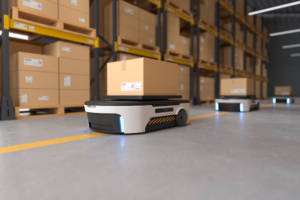
2020 was a challenging peak season across the board. With lower carrier capacities and higher shipping rates, delays were rampant around the holidays. In retrospect, it almost seems like 2020 was just a warm-up for what was to come in 2021. COVID-19 case numbers have hit record highs, and long-standing supply chain challenges and labor shortages came to a peak as a result.
But it isn’t all bad news. Many retailers sold in record numbers in 2021, and technology is advancing by leaps and bounds as we look to solve many of these challenges. These are some of the greatest takeaways we took from 2021’s peak shipping season.
COVID-19 causes continued uncertainty
After the identification of the Omicron coronavirus variant in November and amid a surge caused by the Delta variant, a new wave of COVID-19 infections began in the U.S. There is still much to be learned about this new variant, but it’s safe to say that it is another hindrance to America’s economic recovery.
In 2021, COVID-19 influenced material and labor shortages. As long as the virus is still at large, we have to adapt to these challenges and strengthen our supply chains. We’ve learned to be agile and resilient in the face of these rapid changes, and hopefully in the long run we will be better off for it. We can’t control what the future of COVID-19 will look like, but we can continue to take safety precautions and take the challenges that come with it in stride.

The supply chain isn’t foolproof
In 2021 we saw a perfect storm of supply chain challenges. Transportation costs soared, especially diesel fuel prices, which are up by $1.03 per gallon, according to the Energy Information Administration. Businesses also had trouble keeping up with increased consumer demand as the economy attempted to recover. This resulted in shortages in raw materials across the supply chain, with the likes of steel, wood, plastics, and materials used in computer chips. As carriers faced labor shortages, their capacities went down and their rates went up. Nearly every field of business felt increased stress because of the stressed supply chain.
Overcoming supply chain complications requires a lot of effort and resourcefulness. For now, buying raw materials ahead of time seems to be the best way to keep ahead of the shortages. Previous just-in-time supply chain management strategies don’t look incredibly sustainable heading into 2022, and many businesses will have to continue to adapt to these changes.
Labor is as valuable as any other resource

The labor shortage in the shipping industry is not a new challenge by any means. In 2021 the American Trucking Associations predicted the truck driver shortage to reach over 80,000 drivers — a historic high. Similar impacts were felt across the industry, from warehouses to retail storefronts, coining the term The Great Resignation. In September 2021, the U.S. Bureau of Labor Statistics reported 4.4 million Americans leaving their jobs. The numbers were particularly high with frontline workers, such as retail and health care employees.
Incentivizing workers and rewarding them with benefits is the best way to recruit and retain employees. Limeade surveyed those who switched jobs during this mass exodus and found that many employees were motivated to leave mainly due to burnout, organizational changes, and lack of flexibility in the workplace. Promoting your workplace as somewhere workers are valued and treated as individuals will likely help recruit more employees and retain them over time.


Consumer demand is higher than ever
Ecommerce has been on the rise for years, but in a world where people are staying home more than ever, online shopping has become the norm. In November alone, customers spent over $109.8 billion in online shopping, according to Adobe Analytics. That’s 11.9% over 2020. Peak season continues to reach new highs every year, and online shopping is playing a large part in that.
For retailers, this means preparing earlier and working harder to beat out the competition. Discounts, free shipping, and fast shipping are all major factors that convert customers. The sweet spot is finding a balance that wins shoppers while still bringing in a profit.
Automation is the future
Artificial intelligence and automated machinery thrive in environments where they perform repetitive activities. As this technology continues to develop, automation seems to be the solution to many problems in the logistics industry. This doesn’t necessarily mean replacing every employee with a robot, rather allowing the automation to handle the more tiresome tasks that typically increase turnover. They can increase speed and efficiency as they handle tasks that could otherwise be considered dangerous, like lifting heavy materials. This opens more doors for opportunities for employees to take on roles in robotics, maintenance, and IT.

Peak season pressures
The stakes are high around peak season. For many retailers, the holiday quarter brings in over a quarter of annual sales, Statista found. Learning from the challenges of each peak season puts businesses in a better position to succeed the following year. Despite the uncertainty that comes along with the COVID-19 pandemic, now is the time to start recruiting, implementing new technology, and securing the supply chain so next year’s peak season can be even more successful.
Want to see how EasyPost can optimize your shipping logistics during peak shipping season and beyond? Sign up to speak with one of our shipping experts and learn more about our modern shipping APIs.




